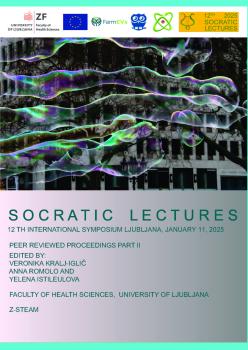Electrochemical Harvesting of Microalgae
Kratka vsebina
The rapid growth of the global population is driving increased energy and resource consumption, necessitating alternative feedstocks. Microalgae, with their high growth rates and valuable natural compounds, offer a sustainable solution for producing biofuels, pharmaceuticals, cosmetics, fertilizers, and animal feed. However, harvesting microalgae remains a significant challenge, accounting for 20–30 % of production costs due to factors such as small cell size, low density of microalgae solution, and negative surface charge of microalgae cell. Conventional methods, including centrifugation and filtration, are also high energy consuming. This study explores electrochemical processes as an alternative harvesting technique, focusing on electrocoagulation-flotation with aluminium and aluminium-graphite electrodes and on electroflotation with graphite electrodes. The additional focus of the research was to explore the harvesting efficiency with graphite electrodes to reduce environmental impact by the usage of aluminium. Experiments were conducted at voltages of 5, 8, and 10 V with harvesting durations of 4 and 8 minutes. Two types of microalgae samples were tested: lab-scale cultivated, and pilot-plant cultivated microalgae from high-rate algal pond at the central wastewater treatment plant Ajdovščina. Harvesting efficiency was determined by optical density at 680 nm. Results showed that higher voltages and extended durations improve efficiency, with a maximum at 98.2 % using aluminium electrodes. Combined aluminium-graphite electrodes achieved a comparable efficiency of 96.8 %, reducing aluminium usage by 50 %. Graphite electrodes alone achieved an efficiency of 66.5 %. Electroconductivity also plays a crucial role in the efficiency of electrochemical processes.
Prenosi
Pages
Najavljeno
Kategorije
Licenca

To delo je licencirano pod Creative Commons Priznanje avtorstva-Deljenje pod enakimi pogoji 4.0 mednarodno licenco.


